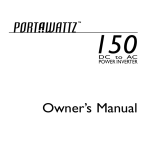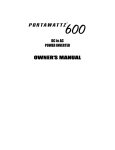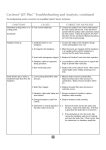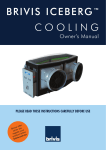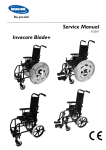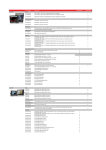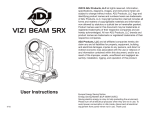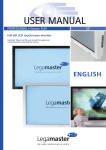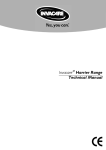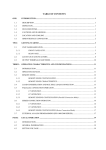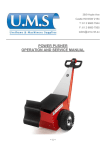Download Service Manual
Transcript
Invacare Apollo MkII Indoor/Outdoor and MkIV Indoor Maintenance and Spares Parts Manual Apollo LEFT BLANK INTENTIONALLY Page 1.2 02/02 CONTENTS Contents Chapter 1 Page Introduction Introduction . . . . . . . . . . . . . . . . . . . . . . . . . . . . . . . . . . . . . . . . . . . . . . . . . . . .1.7 Policy . . . . . . . . . . . . . . . . . . . . . . . . . . . . . . . . . . . . . . . . . . . . . . . . . . . . . . . . .1.9 Technical Details . . . . . . . . . . . . . . . . . . . . . . . . . . . . . . . . . . . . . . . . . . . . . . . .1.9 Chapter 2 Maintenance Scope . . . . . . . . . . . . . . . . . . . . . . . . . . . . . . . . . . . . . . . . . . . . . . . . . . . . . . . .2.3 Inspection . . . . . . . . . . . . . . . . . . . . . . . . . . . . . . . . . . . . . . . . . . . . . . . . . . . . .2.3 Tools . . . . . . . . . . . . . . . . . . . . . . . . . . . . . . . . . . . . . . . . . . . . . . . . . . . . . . . . .2.5 Removing And Replacing Backrest Canvas and Push Handles . . . . . . . . . . . . . .2.7 Removing And Replacing An Armrest Assembly . . . . . . . . . . . . . . . . . . . . . . . .2.11 Removing And Replacing Rear Wheel and Motor Assemblies . . . . . . . . . . . . . .2.15 Removing And Replacing A Brake Assembly . . . . . . . . . . . . . . . . . . . . . . . . . .2.21 Removing And Replacing A Castor Wheel Assembly . . . . . . . . . . . . . . . . . . . .2.23 Removing And Replacing An Adjustable Footrest Assembly . . . . . . . . . . . . . . .2.25 Removing And Replacing Seat Canvas . . . . . . . . . . . . . . . . . . . . . . . . . . . . . .2.27 Removing And Replacing Kerb Climber . . . . . . . . . . . . . . . . . . . . . . . . . . . . . .2.29 Removing And Replacing Batteries . . . . . . . . . . . . . . . . . . . . . . . . . . . . . . . . .2.31 Controller Information (Dynamic) . . . . . . . . . . . . . . . . . . . . . . . . . . . . . . . . . . .2.37 Controller Information (Penny and Giles) . . . . . . . . . . . . . . . . . . . . . . . . . . . . .2.38 Chapter 3 Illustrated Parts List General . . . . . . . . . . . . . . . . . . . . . . . . . . . . . . . . . . . . . . . . . . . . . . . . . . . . . . .3.3 Introduction . . . . . . . . . . . . . . . . . . . . . . . . . . . . . . . . . . . . . . . . . . . . . . . . . . . .3.3 General Arrangement . . . . . . . . . . . . . . . . . . . . . . . . . . . . . . . . . . . . . . . . . . . . .3.5 Backrest Assembly . . . . . . . . . . . . . . . . . . . . . . . . . . . . . . . . . . . . . . . . . . . . . . .3.9 Armrest and Controller Assemblies . . . . . . . . . . . . . . . . . . . . . . . . . . . . . . . . .3.11 Rear Wheel and Motor Assemblies . . . . . . . . . . . . . . . . . . . . . . . . . . . . . . . . . .3.13 Brake Assemblies . . . . . . . . . . . . . . . . . . . . . . . . . . . . . . . . . . . . . . . . . . . . . .3.15 Castor Wheel Assemblies . . . . . . . . . . . . . . . . . . . . . . . . . . . . . . . . . . . . . . . . .3.17 Swinging Detachable Footrest Assembly . . . . . . . . . . . . . . . . . . . . . . . . . . . . .3.19 Seat Canvas Assembly . . . . . . . . . . . . . . . . . . . . . . . . . . . . . . . . . . . . . . . . . .3.21 Batteries and Loom . . . . . . . . . . . . . . . . . . . . . . . . . . . . . . . . . . . . . . . . . . . . .3.23 Kerb Climber Assembly . . . . . . . . . . . . . . . . . . . . . . . . . . . . . . . . . . . . . . . . . .3.25 Options, Accessories and Non-Standard Accessories . . . . . . . . . . . . . . . . . . . .3.26 02/02 Page 1.3 Apollo LEFT BLANK INTENTIONALLY Page 1.4 02/02 INTRODUCTION Chapter 1 Introduction 02/02 Page 1.5 Apollo Figure 1.0 Apollo Indoor Wheelchair General Arrangement Page 1.6 02/02 INTRODUCTION Introduction 1 This manual provides basic details to enable the Apollo range of wheelchairs to be maintained. It is not intended to be a comprehensive maintenance guide/policy, but is intended for use by competent personnel to enable the chair to be adequately maintained. 2 The manual is split into the following chapters: 3 Chapter 2 Detailing assemblies that are maintainable and the relevant procedures. Chapter 3 Detailing parts that are available to enable the maintenance in Chapter 2 to be complied with. The Apollo range of wheelchair is manufactured by: INVACARE Ltd South Road Bridgend Industrial Estate Bridgend Mid-Glamorgan CF31 3PY 4 For Customer Service enquires, repairs, servicing and spares, contact INVACARE Ltd at the address below and quote all the details as indicated in paragraphs 6 and 7. 5 INVACARE Ltd South Road Bridgend Industrial Estate Bridgend Mid-Glamorgan CF31 3PY Tel No: Fax No: 6 7 02/02 01656 647327 01656 649016 Quote the following details at all times: 6.1 Part Number 6.2 Description 6.3 Quantity required For certain orders the following should also be quoted: 7.1 Serial or batch number 7.2 End user Page 1.7 Apollo Figure 1.1 Apollo Outdoor Wheelchair General Arrangement Page 1.8 02/02 INTRODUCTION Policy 8 INVACARE Ltd. repair policy is as follows: Repairs to ANY component other than those detailed in Chapter 2 are not covered. Repairs to ANY metal work is not generally permitted without express permission of INVACARE Ltd. ALL fasteners i.e. bolts, Nyloc nuts, and any fastener showing damage MUST be renewed. Failure to comply with the above absolves INVACARE Ltd of liability. ! Note: Certain components will require removal to carry out maintenance. With the exception of fasteners, these components should be refitted. Technical Details 9 The following data applies to the Apollo range of wheelchairs. 9.1 Available seat sizes: 15 16 17 18 9.2 inches inches inches inches by by by by 16 16 17 17 inches inches. inches inches Seat to ground height: 19 inches. 9.3 Wheel types available: 8 inches (Indoor) 12 1/2 inches (Outdoor) Micro Cellular Plastic tyres (MCP). 9.4 Located to frame. Maximum user weight: 16 stones (100kgs) (Outdoor) 16 stones (100kgs) (Indoor). 9.5 Backrest type: Folding backrest. 9.6 Chair finish: Stove enamel paint in red or black. 9.7 Weight of chair (Total): 55.99kg (122.7lbs) to 57.36kg (126.5lbs) dependent on configuration. 02/02 Page 1.9 Apollo LEFT BLANK INTENTIONALLY Page 1.10 02/02 MAINTENANCE Chapter 2 Maintenance 02/02 Page 2.1 Apollo 2 3 10 9 4 8 1 5 6 7 1 2 3 4 5 Battery assembly Backrest canvas Armrest assembly Rear wheel and motor assembly Brake assembly 6 7 8 9 10 Footplate assembly Castor assembly Swinging bracket assembly Seat canvas Controller Figure 2.0.1 General Arrangement Apollo Indoor Wheelchair Page 2.2 02/02 MAINTENANCE Scope 1 This chapter details the removal and/or replacement procedures required for the following assemblies and/or items. It is not intended to be a strict policy of maintenance but should be used as a guide only. 2 The assemblies covered (refer to Figs 2.0.1 and 2.0.2) are as follows: Section Assembly Page 2.1 Backrest canvas assemblies 2.7 2.2 Armrest assemblies 2.11 2.3 Rear wheels and motor assemblies 2.15 2.4 Brake assemblies 2.21 2.5 Castor assemblies 2.23 2.6 Swing/Detachable footrest assemblies 2.25 2.7 Seat canvas and frame assemblies 2.27 2.8 Kerb climber 2.29 2.9 Batteries 2.31 2.10 Controller 2.37 3 For the tools required refer to the list of tools detailed in paragraph 13. Any special tooling and/or torque requirements will be referred to within the relevant text. 4 General engineering practices and safe working practices must be adhered to at all times. 5 For further information on the assemblies contained within this chapter, contact Customer Services, INVACARE Ltd., (refer to address in chapter 1) quoting the following details: 6 7 5.1 Part Number 5.2 Description 5.3 Quantity required For certain orders the following should also be quoted: 6.1 Serial or batch number 6.2 End user For any ordering or spares procurement, contact INVACARE Ltd., (refer to address in Chapter 1) quoting the details in paragraphs 5 and 6. Inspection 8 In general, a weekly visual check will meet all the inspection requirements. 9 Ensure that the following are checked: 02/02 9.1 Fabric is undamaged and has no signs of sagging. 9.2 The footrest is correctly fitted. 9.3 Both armrests are securely fitted in place. 9.4 Brake mechanism operates freely and when locked, the chair does not move. 9.5 Footplates are undamaged and are correctly fitted. 9.6 Tyres are in good order and the wheels are not damaged. Page 2.3 Apollo 2 3 10 9 4 8 1 5 6 7 1 2 3 4 5 Battery assembly Backrest canvas Armrest assembly Rear wheel and motor assembly Brake assembly 6 7 8 9 10 11 Footplate assembly Castor assembly Swinging bracket assembly Seat canvas Controller Kerb climber Figure 2.0.2 General Arrangement Apollo Outdoor Wheelchair Page 2.4 02/02 MAINTENANCE 10 9.7 If stabilisers are fitted, they are firmly locked in place. 9.8 Electrics: 9.8.1 Controller has no visible physical damage 9.8.2 Batteries show no sign of damage 9.8.3 Interconnecting and main cable looms are in good condition (i.e. insulation) 9.8.4 Plug and socket connections are tight and connectors are free of damage 9.8.5 Retaining straps are secure and tight 9.8.6 Battery carrier is properly seated on the chassis tubes 9.8.7 Charger: No physical damage to the charger case 9.8.8 No physical damage to the motor gearbox Check the finish of the chair for any damage. ! Note: Some finishes are unique to the chair. Check with INVACARE Ltd for details. 11 Check that all bungs and handgrips are fitted and undamaged. 12 Before reassembly of any components, the following examination should be carried out: 12.1 All brazed joints should be examined and any damaged component should be replaced. 12.2 All plated parts should be checked to ensure that surfaces are free from wear, damage or oxidation. 12.3 All Nyloc nuts should be replaced after removal. Tools 13 The following list details the basic tools required to carry out the maintenance given in the following subchapters. 13.1 Pliers 13.2 Socket set (Metric and Imperial) 13.3 Spanners (Metric and Imperial) 13.4 Pozidriv screwdriver 13.5 Slotted screwdriver 13.6 Adjustable spanner 13.7 Torque wrench (20 to 40 lbf.ft rating) 13.8 Set of Allen keys (Metric and Imperial) 13.9 Protected jaw grips 13.10 Nylon mallet 13.11 Pop rivet gun 13.12 Nut insert application tool 13.13 Rule 13.14 Circlip pliers ! Note: 02/02 The above list is not exhaustive. Page 2.5 Apollo 10 9 1 2 3 6 5 4 8 1 2 3 4 5 Backrest canvas Plug Push handle assembly Hex head pivot bolt Plunger 6 7 8 9 10 7 Plunger knob Pozidriv head screw Cup washer Handwheel Pram handle Figure 2.1.1 Folding Backrest Assembly (Apollo Indoor/Outdoor) Page 2.6 02/02 MAINTENANCE 2.1 Removing And Replacing The Backrest Canvas And/Or Push Handles and Pram Handle if Fitted General 1 Check the backrest canvas (refer to Fig 2.1.1 ) and push handles for any defects, (refer to paragraphs 4 and 5). If any defects are observed then refer to paragraphs 6 to 7 for maintenance details and to Chapter 3 for parts information. 2 Ensure that the push handle locks securely into place and that the locking mechanism functions correctly. Tools 3 Refer to the tool list at the beginning of this Chapter. Inspection 4 5 Inspect on a weekly basis for the following: 4.1 No signs of sagging, stretching or excessive wear in the canvas (1). 4.2 No evidence of fraying, especially around the fastener points. 4.3 Pozidriv head screws not missing. 4.4 Cup washers not missing. Inspect the locking mechanism for the following: 5.1 Release levers are not deformed or damaged. 5.2 Locks safely when the push handle is in the upright position. 5.3 Not excessively stiff to operate (action should be smooth and positive). Removal of the pram handle 6 To remove the pram handle (refer to Fig 2.1.1) and proceed as follows: 6.1 Unscrew handwheels (9) from push handle assembly (3) 6.2 Pull the pram handle (10) upwards and out of the push handle tubes (3). Replacing the pram handle 7 Replacing the pram handle is the reverse of removal. However, ensure handwheels (9) are correctly located in push handles. Removal of the backrest canvas and/or push handles 8 02/02 To remove or replace the backrest canvas (refer to Fig 2.1.1) (1) proceed as follows: 8.1 Unscrew and remove the four pozidriv head countersunk screws (7) and cup washers (8). 8.2 Unscrew and remove the two Hex head pivot bolts (4), Nyloc nuts and washers. 8.3 Hold the push handle (3), and slide the lower half of the backrest canvas (1) off. 8.4 Hold the canvas and slide the push handle down and off the canvas. Page 2.7 Apollo 10 9 1 2 3 6 5 4 8 1 2 3 4 5 Backrest canvas Plug Push handle assembly Hex head pivot bolt Plunger 6 7 8 9 10 7 Plunger knob Pozidriv head screw Cup washer Handwheel Pram handle Figure 2.1.1 Folding Backrest Assembly (Apollo Indoor/Outdoor) Page 2.8 02/02 MAINTENANCE Replacing the backrest canvas and/or push handles 9 02/02 To replace the backrest canvas (refer to Fig 2.1.1) is the reverse of the removal, however ensure the following: 9.1 New Nyloc nuts are fitted. 9.2 The securing points are undamaged. 9.3 New washers are fitted as required. 9.4 That the backrest canvas is stretched evenly and is taut. 9.5 The locking mechanism operates correctly. Action should be smooth and positive. Page 2.9 Apollo 1 2 KIT 3 5 4 1 2 3 Sealing plug Armrest pad Pozidriv head screw 4 5 Armrest panel Armrest frame Figure 2.2.1 Armrest Assembly - Apollo Indoor/Outdoor Page 2.10 02/02 MAINTENANCE 2.2 Removing And Replacing An Armrest Assembly General ! Note: The armrest assembly comprises the following: The armrest pad (2), panel (4) and frame (5). 1 Check the armrest pad (2) and frame (5) for any defects (refer to paragraph 4). If any defects are observed then refer to paragraphs 5 to 7 for maintenance details and to Chapter 3 for parts information. 2 The armrest can be renewed as either: 2.1 A complete assembly. 2.2 Armpad kit (KIT). 2.3 Armrest panel. Tools 3 Refer to the tool list at the beginning of this Chapter. Inspection 4 Inspect on a weekly basis for the following: 4.1 Frame (5), panel (4) and finish are undamaged. 4.2 Armrest pad (2) is undamaged and securely fastened in place. Repairing An Armrest Assembly ! Note: For ease of maintenance the armrest assembly can be replaced as a complete assembly. 5 To remove individual components of the armrest assembly proceed as follows: 6 To remove the controller from the armrest (refer to fig 2.2.2) proceed as follows: 6.1 On the controller side, disconnect the control cable Beau connector (2) from the wiring loom. 6.2 Remove the two M5 slotted set screws (4) that retain the controller (1) to the armrest assembly. Caution: 8 To remove the Armrest assembly proceed (refer to fig 2.2.1) as follows: 8.1 9 02/02 In the event of any damage or malfunctioning of the Controller it must be returned via Technical services. DO NOT attempt to open the Controller or carry out any repair on it. Release the armrest plunger lock in the side frame front tube and pull the armrest assembly out of the chassis. Removing the armrest pad (refer to fig 2.2.1) (2). 9.1 Unscrew and remove the two pozidriv screws (3). 9.2 Remove the armrest pad from the frame (5). Page 2.11 Apollo 3 2 1 4 1 3 Controller (Dynamic) Controller (Penny & Giles) 2 4 Beau connector Slotted set screw Figure 2.2.2 Armrest Assembly with controller Page 2.12 02/02 MAINTENANCE 10 Removing an Armrest Panel (4). 10.1 Armrest panel is riveted to the armrest frame. Drill out the four "Briv" rivets using a 1/8" drill, ensuring not to enlarge the holes. Replacing Armrest Components 11 To replace the Armrest assembly or any of the components of the Armrest assembly is the reverse of the removal; however ensure the following: 11.1 The Armrest Panel is flush fitting to the Frame. 11.2 Sealing Plugs are undamaged when replaced. 02/02 Page 2.13 Apollo 11 1 13 14 15 2 3 4 12 5 6 10 7 9 1 2 3 4 5 6 7 8 Motor Wheel Circlip Drive coupling Spring Steel shim washer Circlip Not used 9 10 11 12 13 14 15 Bolt Motor MTG plate Connector Thrust washer Mounting tube Spring button Anti tipping lever Figure 2.3 Rear Wheel Assembly (Apollo Indoor) Page 2.14 02/02 MAINTENANCE 2.3 Removing And Replacing Rear Wheel Assemblies General 1 The Apollo range of wheelchairs can be fitted with the following wheel types: 1.1 A 12 1/2 inch diameter wheel (Outdoor) 1.2 A 8 inch diameter wheel (Indoor). 2 Check the wheel assembly for any defects (refer to paragraph 5). If any defects are observed then refer to paragraphs 6 to 11 for maintenance details and to Chapter 3 for parts. 3 The rear wheel assembly can be renewed as a complete assembly. Tools 4 Refer to the tool list at the beginning of this Chapter. 4.1 A torque wrench of 25 lbf.ft rating is required. Inspection 5 Inspect on a weekly basis for the following: 5.1 Motor cable insulation in good condition. Connector properly inserted in Controller socket. 5.2 No visible damage to Motor assembly (1). 5.3 Motor assembly (1) fixing bolts are tight and in good condition (no corrosion, etc.). ☞ Note: For any fault conditions or irregularities in Motor operation refer to Diagnostics and Troubleshooting. 5.4 Drive wheel (2) shows no signs of physical damage or distortion and is tightly seated on the drive shaft. 5.5 When the drive wheel (2) is allowed to freewheel that no binding, grating noise or unconcentric rotation are present. 5.6 Tyre not excessively worn and not visibly damaged (cracks). Amount of wear is approximately the same on both tyres of the wheelchair. Tyre is correctly inflated (for pneumatic tyres only). 5.7 Electromagnetic park brake cuts in properly and prevents the wheels from rotating. 5.8 Freewheel function test is satisfactory, including drive dog release/engagement. Removing Main Rear Wheel (Outdoor) 6 02/02 To remove a drive wheel (refer to fig 2.3.1) proceed as follows: 6.1 Raise and support the chair so that the wheel is free of the ground. 6.2 Using a thin-blade screwdriver prise the Plastic Cap (8) out of the wheel hub. 6.3 Carefully remove the Slotted Screw (7) in the wheel hub and retrieve the components of the drive/freewheel assembly (washer (6), compression spring (5) and drive dog (4)). 6.4 Using a socket wrench unscrew the wheel nut (3) and pull the drive wheel (2) from the drive shaft. If necessary, tap the wheel centre gently with a mallet to loosen it. Page 2.15 Apollo 1 11 12 13 14 15 2 10 3 9 1 2 3 4 5 6 7 8 Motor Drive wheel Nut Drive coupling Compresion spring Washer Slotted set screw Plastic hub cap 9 10 11 12 13 14 15 4 5 6 7 Bolt Motor bracket Connector Motor shaft spacer Mounting tube Spring button Anti tipping lever Figure 2.3.1 Rear Wheel Assembly (Apollo Outdoor) Page 2.16 02/02 8 MAINTENANCE Removing Rear Wheel (Indoor) 7 To remove a drive wheel (refer to Fig 2.3) proceed as follows: 7.1 Raise and support the chair so that the wheel is free of the ground. 7.2 Using circlip pliers carefully remove circlip (7). Be carefull not to lose washer (6) and spring (5). Remove washer (6), spring (5) and drive coupling (4) from the wheel assembly. 7.3 Using the circlip pliers remove the larger circlip (3) and pull the drive wheel (2) from the shaft. If necessary, tap the wheel centre gently with a mallet to loosen it. Removing Motor Assembly 8 To remove the motor assembly (1) (refer to Fig 2.3.1) proceed as follows: 8.1 Carry out the procedure detailed in paragraphs 6.1 to 6.4. 8.2 Disconnect the motor cable connector (11) from the wiring loom. 8.3 Using open-ended spanners of the correct size slacken all three motor mounting bolts (9) and nyloc nuts. 8.4 Fully unscrew and remove the two upper mounting bolts and nyloc nuts. 8.5 Support motor assembly (1) and remove the lower (9) mounting bolt and nyloc nut. Replacing Drive Wheel and Motor Assemblies 9 Replacing the drive wheel (2) and motor (1) assemblies is the reverse of the removal. Caution: ☞ Note: If mounting bolts and nuts show any sign of wear (thread) or corrosion, replace them. The Nyloc nuts must be renewed on every occasion the wheel is removed. Wheel nuts bolted down to a torque of 35 - 40Nm. Slotted Screws (7) and the Compression Spring (5) should be renewed if signs of sluggishness or distortion are visible. It is also important to check cleanliness and condition of the drive shaft, in particular its thread. No attempt should be made to dismantle the motor (1) unit for repair or servicing in the field. In the event of damage or faults, the unit should be returned to the factory. Replacing A Main Wheel Assembly CAUTION: OUTDOOR ONLY. Apply Loctite 242 to the thread of the motor shaft and ensure that the locknut is tightened to a torque of 25 lbf.ft. 10 Replacing the main wheel assemblies is the reverse of the removal. Removing Anti Tipping Lever (Mk4 if fitted and Mk2) 11 To remove anti tipping lever proceed as follows: 11.1 Depress the spring button (14) and withdraw anti tipping lever (15) from mounting tube (13) Replacing Anti Tipping Lever 12 02/02 Replacing the anti tipping lever is the reverse of the removal. However, ensure spring button (14) locates correctly in the mounting tube hole (13). Page 2.17 Apollo Motor Assembly General Description 1 The Fracmo motor has been specially designed for powered wheelchairs to give high performance, extended battery life and high efficiency. 2 The unit is supplied with a electromagnetic brake, which can be supplied wound either for 12 or 24 volts depending on the system requirements. 3 The carbon brushes have been selected to give extended life, low noise and are easy to replace if required. 4 The geared unit consists of a hardened worm cut on the armature shaft and a bronze worm wheel fitted to hardened pinion gear, which then drives a hardened output gear fitted to the shaft. 5 The motor uses high-powered magnets and the armature is balanced to reduce any vibrations. 6 The motors can be supplied with suppression to make EMC compliance easier. 7 The unit has been designed to give a maximum noise level (off load) of 60-62 dBA when measured at 12" or 30cms from all surfaces. Specifications Apollo Indoor Weight of unit 4kg Geared Motor Part No.: 451-25-025-G30-35A/B Drawing No.: 45225/025 Motor type: Permanent magnet Frame size: M45225 Motor voltage: 24 volts Bearings: Single row ball bearings Holding brake torque: 1.5Nm Holding brake voltage: 12V Watts output: 70W Watts input: 116W Motor rpm: 4000 Full load current: 4.85 amperes Gearbox Page 2.18 Type: RAWS 30 Ratio: 35:1 Output rpm: 115 Output torque: 2.7Nm 02/02 MAINTENANCE Specifications Apollo Outdoor Weight of unit 4.5kg Geared Motor Part No.: 452-75-096-G30-30C/D Drawing No.: 45275/096 Motor type: Permanent magnet Frame size: M45275 Motor voltage: 24 volts Bearings: Single row ball bearings Holding brake torque: 1.5Nm Holding brake voltage: 12V Watts output: 160W Watts input: 273W Motor rpm: 3500 Full load current: 11.4 amperes Gearbox Type: RAWS 30 Ratio: 30:1 Output rpm: 115 Output torque: 11Nm Maintenance and Servicing 8 Check for loose, damaged or corroded connectors and terminals. 9 Check motor leads for damage and replace as necessary. 10 Check gearbox mounting bolts for tightness. 11 Check for grease leaks around any seals or output shaft. 12 Check for damaged commutator. 13 Check free movement of brushes. 02/02 Page 2.19 Apollo 1 2 1 Indoor brake 2 Outdoor brake Figure 2.4 Brake Assemblies Page 2.20 02/02 MAINTENANCE 2.4 Removing And Replacing A Brake Assembly General !Note: The brake assembly is handed, ensure that if both assemblies are removed that the correct assembly is fitted to the correct side. 1 Check the brake assembly for any defects (refer to paragraph 4). If any defects are observed then refer to paragraphs 5 to 6 for maintenance details and to Chapter 3 for parts information. 2 It is not intended that any other part is maintainable. Tools 3 Refer to the tool list at the beginning of this Chapter. Inspection 4 Check the following daily: 4.1 Brake assembly fully locks and the chair is unable to move. 4.2 Brake action is positive and is not stiff. Removing A Brake assembly ! Note: (a) 5 For ease of maintenance the brake assembly can be removed as a complete assembly. (b) Note the position of the brake assembly. (b) The following procedure applies to any brake assembly. To remove the brake assembly proceed as follows: 5.1 Ensure that brake assembly is in the unlocked position. 5.2 Unscrew the two retaining bolts fastening the brake assembly to the frame and the motor bracket. 5.3 Remove the brake assembly (refer to fig 2.4 (1)) from its location. Replacing A Brake Assembly 6 02/02 To replace a brake assembly is the reverse of the removal. Page 2.21 Apollo 1 Figure 2.5 Castor Wheel Assembly Page 2.22 02/02 MAINTENANCE 2.5 Removing And Replacing A Castor Wheel Assembly General 1 Check the castor wheel assembly for any defects (refer to paragraph 4). If any defects are observed then refer to paragraphs 5 to 8 for maintenance details and to Chapter 3 for parts information. 2 It is not intended that any other part is maintainable. Tools 3 Refer to the tool list at the beginning of this Chapter. Inspection 4 Check the following: 4.1 Castor fork is undamaged. 4.2 Tyre is not cracked or excessively worn. 4.3 Castor wheel rotates freely when lifted clear of the ground and spun. 4.4 The tyre is firmly fitted and concentric within the rim. Removing A Castor Wheel Assembly 5 To remove the castor wheel assembly proceed as follows: 5.1 Raise and support the front of the chair. 5.2 Using a torque wrench unscrew the castor wheel until the castor assembly releases from its location. 5.3 Remove the castor wheel assembly. 5.4 Check that the castor wheel location is undamaged and clean. Replacing A Castor Wheel Assembly CAUTION: 6 7 02/02 Apply Loctite 242 to the thread of the castor wheel shaft and ensure that the castor wheel is tightened using the fork nut to a torque of 30 lbf.ft. Replacing the castor wheel assembly is the reverse of the removal; ensure the following: 6.1 It is firmly located and secure. 6.2 Free to rotate through 360 degrees. 6.3 Is undamaged. Once correctly fitted, remove the support and allow the chair to sit on all four wheels. Check that it functions correctly. Page 2.23 Apollo 4 1 2 3 1 3 Latch plate Footplate assembly 2 4 Stem tube Heel loop assembly Figure 2.6 Swinging/detachable Footrest Assembly Page 2.24 02/02 MAINTENANCE 2.6 Removing And Replacing An Adjustable Footrest Assembly General 1 Check the adjustable footrest assembly for any defects (refer to paragraph 3). If any defects are observed then refer to paragraphs 5 to 9 for maintenance details and to Chapter 3 for parts information. Tools 2 Refer to the tool list at the beginning of this Chapter. Inspection 3 4 Check the following: 3.1 Footplate (Fig 2.6 (3)) is undamaged, fitted securely to the stem tube (2) assembly, swivels up and down smoothly and is effectively supported in horizontal. 3.2 Heel loop assembly (4) is undamaged and securely fastened to the footplate (3). 3.3 Latching mechanism (1) functions correctly and the footrest assembly locks securely in place. 3.4 Stem tube assembly is undamaged. 3.5 Locating holes and Lugs are free from damage. Any defects to the above will require the assembly to be repaired. Removing A Swing/Detachable Footrest Assembly 5 To remove the swing/detachable footrest assembly proceed as follows: 5.1 Operate the latching mechanism and allow the footrest assembly to rotate away from the frame. 5.2 Lift the swing/detachable footrest assembly free of the locating lugs. Replacing A Swing/Detachable Footrest Assembly 6 02/02 Replacing any component previously mentioned is the reverse of the removal. Page 2.25 Apollo 1 11 10 9 8 7 6 5 4 3 2 1 3 5 7 9 11 Side frame Armrest locking plunger Plastic cap Starlock washer Cup washer Seat canvas 2 4 6 8 10 Reinforcing strip Armrest locking spring Armrest cam assembly Seat canvas peg Pozidriv screw Figure 2.7 Seat Canvas and Frame Assembly Page 2.26 02/02 MAINTENANCE 2.7 Removing And Replacing Seat Canvas General 1 Check the seat canvas (11) for any defects (refer to paragraph 3). If any defects are observed then refer to paragraphs 5 to 6 for maintenance details and to Chapter 3 for parts information. Tools 2 Refer to the tool list at the beginning of this Chapter. Inspection 3 4 Check for the following: 3.1 Damage to seat canvas (11). 3.2 Sagging. 3.3 Reinforcing bar (2) missing and/or damaged. Generally replace and/or tighten any screws (10) or cup washers (9) and canvas pegs (8) that are missing/damaged. Removing The Seat Canvas 5 To remove the seat canvas (11) proceed as follows: 5.1 Unscrew and remove the countersunk head screws (10) and cup washers (9) on the left side only. 5.2 Lift the seat canvas clear of the chair frame. Replacing The Seat Canvas ! Note: Check the order for the correct seat canvas size. 6 02/02 Replacing the seat canvas is the reverse of the removal, refer to Chapter 3 for parts information. Ensure that all damaged screws (10), washers (9) and seat canvas pegs (8) are replaced. Page 2.27 Apollo 4 3 5 7 2 1 6 1 2 3 4 Bolt Mounting bracket Nuts Spacers 5 6 7 Location pin Kerb climber assembly Screw Figure 2.8 Kerb Climber Assembly Page 2.28 02/02 MAINTENANCE 2.8 Kerb Climber Assembly General 1 Check the condition of the kerb climber for any defects (refer to paragraph 3). If any defects are observed then refer to paragraphs 4 to 5 for maintenance details and to Chapter 3 for parts information. Tools 2 Refer to the tool list at the beginning of this Chapter. Inspection 3 Check for the following on daily basis: 3.1 Kerb climber (6) show no sign of physical damage. 3.2 Kerb climber operates correctly. 3.3 Location pin (5), bolts, nuts and spacers are not damaged or missing Removing and Replacing Kerb Climber Assembly 4 5 02/02 To remove the kerb climber proceed as follows: 4.1 Remove location pin (5) and lower right hand side of kerb climber assembly (6) from mounting bracket (20, then slide out from left hand mounting bracket. 4.2 Remove screw (7), bolts (1), nuts (3) and spacers (4), the remove mounting brackets from side frames. Replacing the kerb climber is the reverse of removal. Page 2.29 Apollo 2 3 1 4 5 10 6 7 8 9 1 2 3 4 5 6 Control box Boxes with circuit breakers Wiring loom Gel battery Boxes without circuit breakers Handwheel 7 8 9 10 Clamp strip Battery box carrier frame Battery strap Boxes with circuit breakers Figure 2.9 Batteries Page 2.30 02/02 MAINTENANCE 2.9 Batteries General 1 Check the condition of the batteries and the associated wiring for any defects (refer to paragraph 3). If any defects are observed then refer to paragraphs 4 to 5 for maintenance details and to Chapter 3 for parts information. The information provided in paragraph 6 onwards is for guidance only. Tools 2 Refer to the tool list at the beginning of this Chapter. Inspection 3 Check for the following on daily basis: 3.1 Batteries (4) show no sign of physical damage. 3.2 Interconnecting cable and wiring loom (3) are in good condition. Socket connections are tight and connectors are undamaged. 3.3 Retaining battery straps are secure and tight. 3.4 The battery carrier (8) is properly seated on the wheelchair chassis. Removal of Batteries 4 To Remove the batteries, proceed as follows: 4.1 Lift the right hand canvas from the seat. 4.2 Unfasten the battery retaining straps and disconnect the interconnecting cable (3). 4.3 Disconnect the wiring loom if fitted from the connectors on the battery boxes (5). 4.4 Ensure that the battery boxes are free from any obstructions and carefully lift out the battery boxes from the carrier assembly (8). 4.5 Remove the Battery Covers (2). Removal of Battery Box Carrier Frame 5 To remove battery box carrier proceed as follows. 5.1 Unscrew the four handwheels (6) on each side. 5.2 Remove clamp strap (7) from each side. 5.3 Lift battery box carrier (8) from frame. Replacing the Battery Box Carrier Frame 6 Replacing the battery box carrier is the reverse of removal. Replacement of Batteries 7 02/02 Replacing the batteries is the reverse of removal, refer to Chapter 3 for parts information. Page 2.31 Apollo 6 Twenty things that can affect the life and running time of your DRYFIT battery when used with small electric vehicles. 6.1 Low pneumatic tyre pressures. 6.2 Heavy loads. 6.3 Hills. 6.4 Muddy ground. 6.5 Very cold weather. 6.6 Very warm weather. 6.7 Insufficient recharge time. 6.8 Use of a wrong charger. 6.9 Battery age. 6.10 Loose connections. 6.11 Failure to recharge immediately after use. 6.12 Exhausted cycle life of the battery. 6.13 Running until the battery is totally flat. 6.14 Leaving it connected to the charger when the charger is switched off. 6.15 Worn or obstructed wheel bearings. 6.16 Tampering with the battery. 6.17 Faulty charger. 6.18 Faulty vehicle controls. 6.19 Damaged connecting cables. 6.20 Faulty battery (fortunately a very rare occurrence with dryfit gel lead acid batteries). GUIDELINES FOR USING DRYFIT GEL LEAD ACID BATTERIES Never do the following: * Never use your battery unless it is fully recharged. * Never connect the battery the wrong way round. The battery terminals are clearly marked with the positive (+) and negative (-) signs. * Do not allow loose connections to the battery. * Do not use a non-approved charger. * Do not leave your battery in a flat (discharged) state. * Do not leave the battery connected to the charger unless the charger is switched on. * Do not attempt to 'top-up' the battery. They never need it! * Never attempt to remove the valve covers at the top of the battery. These batteries are totally maintenance free. Page 2.32 02/02 MAINTENANCE * Do not allow tools or metal objects to short out the battery terminals. * Never allow naked flames or matches to be used in the vicinity of any battery. * Do not use different size or different type batteries together with the same equipment. * Never attempt to lift batteries by their terminals or connectors. * Do not drop or crush. * Do not dispose of used batteries with normal waste. Always dispose via your local council disposal yard. GUIDELINES FOR USING DRYFIT GEL LEAD ACID BATTERIES Always do the following: 02/02 * Give the battery a full recharge before using it for the first time. It may need this after being in storage for some time at your suppliers premises. * Ensure that the cables from your equipment are connected to the battery the right way round. The battery terminals are clearly marked with + and - signs. * Ensure these connections are correctly tightened. Loose connections can lead to reduced battery life, or in extreme circumstances, could overheat and cause fires. * Connect the positive (+) connection first and the negative (-) last. When disconnecting, take off the negative (-) first. * Only use a charger which meets the requirement specification for dryfit batteries. These requirements may be obtained by reference to the battery brochure. The use of an unsuitable charger may seriously reduce the service lifetime of your battery and will invalidate possible warranty claims. An assurance should be sought from any potential charger supplier that the requirements are met for the specific battery type and size. * Allow sufficient time to completely recharge your battery between periods of use. The normal recharge time for a completely discharged battery will be about 14 hours. Partly discharged batteries will obviously recharge faster. * If you do not use your battery for long periods of time, we recommend a periodic recharge approximately every nine months. * Always recharge your battery as quickly as possible after use, and in any case, not longer than 14 days afterwards. * Always ensure your battery is fully recharged before long periods of non-use. * Store out-of-use batteries in a cool dry location. * If your battery is installed in a box or compartment, always ensure that the container has plenty of ventilation holes in the lid and sides. * Keep your battery clean with a dry brush. * Dispose of used batteries through your local council disposal yard. They have special areas for used batteries. Page 2.33 Apollo HOW TO LOOK AFTER YOUR GEL BATTERY AND CHARGER Read these instructions very carefully before carrying out any battery maintenance or charging. They have been produced to help you get the best performance from your equipment. WARNING NEVER SMOKE OR USE NAKED FLAMES NEAR THE BATTERY. THE GASES THAT CAN BE GIVEN OFF ARE EXPLOSIVE. THE ACID CONTAINED WITHIN GEL BATTERIES IS FIXED WITHIN THE GEL ITSELF. IT CAN ONLY ESCAPE IF THE CASING IS DAMAGED. IT IS STILL ACID AND WILL BURN. AVOID CONTACT WITH THE SKIN AND EYES. IF YOU DO GET INTO CONTACT WITH ACID, WASH IT OFF WITH PLENTY OF WATER AND CONSULT YOUR DOCTOR, IF NECESSARY. REPORT THE LEAKAGE TO THE BODY THAT ISSUED THE CHAIR. BATTERY MAINTENANCE IT IS IMPORTANT TO REALISE THAT GEL BATTERIES ARE DIFFERENT FROM CONVENTIONAL WET LEAD ACID BATTERIES. THERE IS ABSOLUTELY NO REQUIREMENT TO TOP UP THE BATTERY AT ALL. DO NOT attempt to remove the valve covers. This will void any guarantees given with the battery. DO NOT put any metal objects on top of the battery. This is dangerous and can damage the battery. DO NOT allow the battery to be left in a discharged condition. DO KEEP the battery top clean and dry. DO KEEP the battery terminals clean and smeared with petroleum jelly (Vaseline). DO LEAVE the battery in a fully charged state before any long period of non-use of the chair (during winter months for instance). In this condition the batteries need no further attention for up to 9 months when it is then recommended to recharge the batteries. 24V GEL TYPE BATTERY CHARGER Operating Instructions PLEASE READ AND RETAIN THESE INSTRUCTIONS BEFORE USING THE BATTERY CHARGER. General: This battery charger has been carefully designed for use with 24 volt GEL type sealed lead-acid batteries only. Do not attempt to charge any other type or rechargeable battery, or batteries which are non-rechargeable. Important: To ensure safe and efficient charging, the battery charger must be used with the correct size of battery. Refer to the table below. CHARGER RATING RECOMMENDED BATTERY SIZE Amps Ampere hours (Ah) 5 20 Ah min. 40 Ah max. 7 25 Ah min. 50 Ah max. If advice on charging batteries outside this range is required please contact our technical department. Mains Input: The charger is designed to operate from the 230V 50 Hz AC supply which is standard across EU countries. The supply is connected to the charger by an IEC inlet and a detachable supply cord. The inlet is fitted with a fuse located in a sliding drawer, and is accessible when the supply cord is disconnected. If this fuse fails, it must be replaced with an identical type as detailed below; Fuse size: 20 x 5mm Rating: 5A, antisurge (T), high rupture capacity (1500A @ 250V ac) For supply cords fitted with a UK style plug, the plug fuse is also rated at 5A. Persistent supply use failure may indicate a faulty charger. The charger should then be returned to the supplier for examination. The charger is of double insulated class 2 construction, and does not require a connection to the supply earth. A mains on/off switch is available as an optional extra. Output: The charger supplies a constant charging current to the battery during the initial bulk charge phase, the output current being limited electronically to the rating of the charger. This constant current stage is maintained until the battery voltage reaches the maximum permitted value for a gel type battery. The charger will then accurately maintain this voltage for a fixed period until the battery is fully charged, which is indicated by the "Charge Complete" indicator. Page 2.34 02/02 MAINTENANCE Indicators: Four coloured lights on the front panel provide charging status indication, as shown below; COLOUR STATE OF CHARGE Yellow Mains On Green Bulk Charging Yellow 90% Charged Red Charge Complete OPERATING INSTRUCTIONS 1. Connect the charger output lead to the battery. If the output lead is fitted with a plug, this is simply plugged into the matching socket on the battery installation. 2. Connect the battery charger to the mains supply and switch on. The MAINS ON and BULK CHARGING indicators will illuminate. 3. When the battery is 90% recharged the 90% CHARGED indicator will illuminate. Occasionally the battery can be used now but a full recharge must be given us soon as possible. 4. The battery is fully charged when the CHARGE COMPLETE light illuminates. The battery may be left on charge at this point to maintain the battery in a fully charged condition. 5. Switch off the mains supply before removing the charger plug. 6. The battery charger includes a timer to control the final stage of the charge cycle. Please note that the minimum period from start of charge until the CHARGE COMPLETE light illuminates will be approximately 5 to 8 hours, even for batteries which are only partially discharged. 7. In automotive or marine applications, there is a potential fire or explosion hazard arising from close proximity to petroleum products such as fuel and bottled gas. When connecting the charger to the battery, first connect the appropriate output conductor to the unearthed battery terminal, then connect the other output conductor to the chassis away from the battery and fuel line. To stop charging, disconnect charger supply, chassis conductor and battery conductor in this order. Protection: The following protective features are included in this charger:(I) Reverse Battery Protection:- protects against incorrect battery connection. (ii) Slow Start:- A short delay is incorporated to ensure that the charger output does not switch on until the battery connections have been made correctly. (iii) Thermal Protection:- A non-resetting thermal fuse is built into the transformer to switch off the mains supply to the transformer in the event of severe overheating. This could occur if, for example the ventilation slots are obstructed, or the charger is located where the surrounding temperature exceeds 30°C. (iv) Low Battery Inhibit:- The charger will not operate if connected to a deeply discharged battery standing at less than 8V. (v) Current Limit:- The bulk charging current is electronically limited by the charger to ensure that the output current cannot exceed the recommended battery rating. Construction: The charger is designed and built to comply with the safety requirements of European standard EN60335 part 2.29. 02/02 Page 2.35 Apollo WARNINGS A. For indoor use only - do not expose to rain or spray. B. Do not smoke or expose naked flames near to the battery. C. Do not obstruct the ventilation slots by, for example, covering the charger with clothing or bedding, or placing the charger on deep pile carpets or soft furnishings. D. Do not poke or drop any objects through the slots in the charger case. E. The charger must be stood on its rubber feet, placed on a flat horizontal surface. F. No user replaceable components inside. Dangerous voltages within. DO NOT attempt to open the charger case. Return to the manufacture if service required. FAULT FINDING SYMPTOM MAINS ON indicator will not illuminate when charger supply switched on. POSSIBLE CAUSE Charger inlet fuse failed Supply cord plug failed (UK only) Charger supply not switched on Mains supply not present Charger fault BULK CHARGING indicator will not illuminate. Battery not connected Battery polarity reversed Battery voltage too low - below approx. 8V the charger output is inhibited Charger fault 90% CHARGED or CHARGE COMPLETE lights do not illuminate, even after prolonged charging i.e. more than 16 hours. Battery capacity too large for charger rating Individual cells in battery may be faulty so that charging current remains high An external load is still connected to the battery Charger fault SUGGESTED ACTION Replace fuse with identical type Replace fuse with identical type Switch supply on Check supply present at socket with another appliance Return charger for repair Switch off charger and check that output leads are connected to battery, or that any fuse in the battery circuit is healthy, and that there are no loose connections in the wiring Switch off charger and check the battery clips are connected the right way round Switch off charger and check battery voltage. Deeply discharged batteries may require special attention for recovery Return charger for repair Check battery Ah capacity is within charger rating Batteries should be tested for possible faults Check that any equipment connected to the battery is disconnected or switched off Return charger for repair Page 2.36 02/02 MAINTENANCE 2.10 CONTROLLER INFORMATION (Dynamic) Diagnostics Diagnostic information is provided to enable a fault in the system to be identified and localised to a major component; e.g. motor. The following system diagnostics are provided: Flash code sequence 1. Low battery voltage fault. "__"__"__ 2. High battery voltage fault. ""__""__""__ 3. Left motor (or connection) fault. """__"""__ 4. Right motor (or connection) fault. """"__""""__ 5. Left or right electromagnetic brake (or connection) fault. 6. Controller fault. 7. Motor stalled or joystick out of neutral time out """""""__"""""""__ """""__"""""__ """"""__""""""__ where """ is a flash and "_" is a pause. In the event of a system fault, the diagnostic indications are displayed by the battery gauge flashing. Faults are encoded as one (for a low battery voltage fault) to seven (for a motor stalled or joystick out of neutral time out fault) and displayed by flashing all LED's the number of items given by the fault code. The flash sequence (one to seven) is followed by a long off period (2 seconds). All faults latch, disabling the controller, and require the controller to be turned off then on again even if the source of the fault is removed. Troubleshooting Guide The following is a check list to assist with diagnosing an electrical fault on a wheelchair. If after consulting the check list the problem persists then an authorised service agent should be contacted. 02/02 Page 2.37 Apollo Troubleshooting Guide The following is a check list to assist with diagnosing an electrical fault on a wheelchair. If after consulting the check list the problem persists then an authorised service agent should be contacted. PROBLEM 0. The On status indicator/Battery Gauge does not light when the controller is switched on CHECK/ACTION 1. Check the battery connector to the controller is securely plugged into the connector from the battery. 2. Check the batteries themselves are connected correctly. i.e. check the battery terminals. 3. Check the batteries are not measuring less than 15V, using a voltmeter. 4. Check the battery supply fuse or circuit breaker. If the fuse has blown check for wiring faults. 1. Low battery voltage fault 1. Check the battery connector to the controller is securely plugged into the connector from the battery and is in a good condition (free from corrosion). 2. Check that the battery terminals are tight and in good condition. 3. Check the batteries are not at the end of their life. 4. Check the batteries are not measuring less than 15V, using a voltmeter. 2. High battery voltage fault 1. Check the battery charger. Is it overcharging the batteries? Is the charger the correct type? Battery voltage should not be greater than 32V with battery removed from charger. 3. Left motor (or connection fault) 1. Check the left and right motor/solenoid brake connectors are securely plugged in. 2. Check the contacts in the left and right motor connectors for corrosion or damage. 3. Check the left and right motors. If the resistance is more than 1 Ohm or less than 100 milliohms the motor is probably faulty. 4. Check the resistance of the motor to its housing. If the resistance is less than 1 Megaohms the motor is probably faulty. N.B. Due to limitations of the diagnostics a fault in one motor may be indicated as a fault in the other motor. 5. Disconnect both motors (and park brakes). Turn the controller off and on leaving the joystick in neutral. If a motor fault is still indicated then the fault is actually with the controller. N.B. Due to limitations of the diagnostics a fault in the controller output electronics may be indicated as a motor fault. 4. Right motor (or connection fault) Page 2.38 As above. 02/02 MAINTENANCE Troubleshooting Guide (continued) PROBLEM 5. Left or right park brake (or connection) fault CHECK/ACTION 1. Check the motor/solenoid brake connectors are securely plugged in. 2. Check the contacts in the connectors for corrosion or damage. 3. Check the park brakes. If the resistance is less than 20 ohms or more than 100 ohms the solenoid brake is probably faulty. 6. Controller fault 1. Disconnect both motors (and park brakes). Turn the controller off and on leaving the joystick in neutral. If a controller fault is still indicated then the controller fault is confirmed. 2. Disconnect both motors (and solenoid brakes). Turn the controller off and on leaving the joystick in neutral then deflect the joystick. If the controller’s relay clicks twice and a left motor fault is now indicated then the controller is OK. If another fault other than left motor is indicated and the relay does not click then a controller fault is confirmed. 3. Check the motors per problem 3 or 4. N.B. Due to limitations of the diagnostics a fault in a motor while driving may be indicated as a fault in the controller. 7. Motor stalled or joystick out of neutral time out 1. Check joystick is released and in neutral when controller is switched on. 2. Check wheelchair is able to move and is not blocked by an obstacle. 3. Check motors and gearboxes are OK by releasing the free wheeling hubs, deflecting the joystick forward and observing the hubs to see if both left and right hubs turn. 8. The Battery Gauge is on and control box is heard to “click”, but chair does not move or steering is erratic 1. Check both free wheeling hubs are engaged? With the controller off, push or pull the wheelchair to ensure both left and right wheels do not free wheel. 9. The wheelchair turns in circle or does not drive straight 1. Check motors and gearboxes are OK by releasing the free wheeling hubs, deflecting the joystick forward and observing the hubs to see if both left and right hubs turn. 2. Check both free wheeling hubs engaged. With the controller off, push or pull the wheelchair to ensure both left and right wheels do not free wheel. 3. Check if one park brake is dragging. Does one or both park brakes get hot after driving? The park brake should be able to be touched without any discomfort. 10.Batterries not charging 1. Check the battery charger is plugged in and switched on. 2. Check that the charger is plugged into a working power source. 3. Check the charger is the correct type. 4. Check the charger operation. 5. Check the fuse next to the power connector on the charger. WARNING: Disconnect charger from both the mains socket and battery charger socket before checking the fuse. 02/02 Page 2.39 Apollo 2.11 CONTROLLER INFORMATION (Penny & Giles) Diagnostics This section is only applicable if you have a PILOT controller fitted with a TrueCharge display. The diagram below shows you how to read the TrueCharge display in the event of a fault. If you look at the diagram you will see that 10 different types of fault are defined. The number of bars flashing on the TrueCharge display indicates the fault type. A brief description for each fault type is also included on the diagram. These fault types and their possible sources are described in more detail on page. As an example, assume that the wires to the solenoid brake has been disconnected. The controller would detect this as a fault, so in this instance cause 9 bars to flash on the display, corresponding to fault type 9. TrueCharge Display Diagnostics Fault type 10 9 8 7 6 5 4 3 2 1 Green Green Green Yellow Yellow Yellow Yellow Red Red Red Description High battery voltage Solenoid brake fault Possible controller fault Possible joystick fault Inhibit active Right motor wiring fault Right motor disconnected Left motor wiring fault Left motor disconnected Low battery voltage Fault Types and their Possible Causes 1 Low battery fault This occurs when the controller detects that the battery voltage has fallen below 13.5V. Check the condition of the battery. 2 Left motor disconnected This occurs when the controller detects that the left motor has become disconnected. Check the left motor, motor connectors and wiring. 3 Left motor wiring fault This occurs when the controller detects a fault in the wiring to the left motor, in particular a motor connection has “short-circuited” to a battery connection. Check the left motor connectors and wiring. 4 Right motor disconnected This occurs when the controller detects that the right motor has become disconnected. Check the right motor, motor connectors and wiring. 5 Right motor wiring fault This occurs when the controller detects a fault in the wiring to the right motor, in particular a motor connection has “short-circuited” to a battery connection. Check the right motor connectors and wiring. 6 Inhibit active This occurs when the controller detects that the inhibit input is connected. The most common use for the inhibit input is for disabling the drive when the charger is connected. Check that the battery charger is disconnected from the wheelchair. Please note this”fault” occurs if you connect a programmer to a working controller when it is turned on. This fault is not actually a fault but incorrect use of the programmer. To program you must connect the programmer before the controller is turned on. Page 2.40 02/02 MAINTENANCE 7 Possible joystick fault This occurs when the controller detects a fault in the joystick or the connections to it. The course of action will differ depending on whether you have an integral (joystick in main box) or remote (separate joystick module) system. Integral - the fault is in the joystick or connections to it. As the joystick is within the main box, then the controller must be assumed defective and repaired by an authorised person. Remote - the fault is in the joystick or connections to it. The fault could be in the joystick module, or the cable to it which is attached to the controller. If you have a spare working joystick module, connect it and see if it cures the problem, if it does the original joystick module must be assumed defective and repaired by an authorised person. If the fault is still present with the spare joystick module, then the controller must be assumed defective and repaired by an authorised person. 8 Possible controller fault This occurs when the controller detects a fault in itself. The controller must be assumed defective and repaired by an authorised person. 9 Solenoid brake fault This occurs when the controller detects a fault in the solenoid brake or connections to it. Check these connections and the solenoid brake. 10 High battery fault This occurs when the controller detects that the battery voltage has risen above 35V. Check the batteries and the connections to them. 02/02 Page 2.41



















































